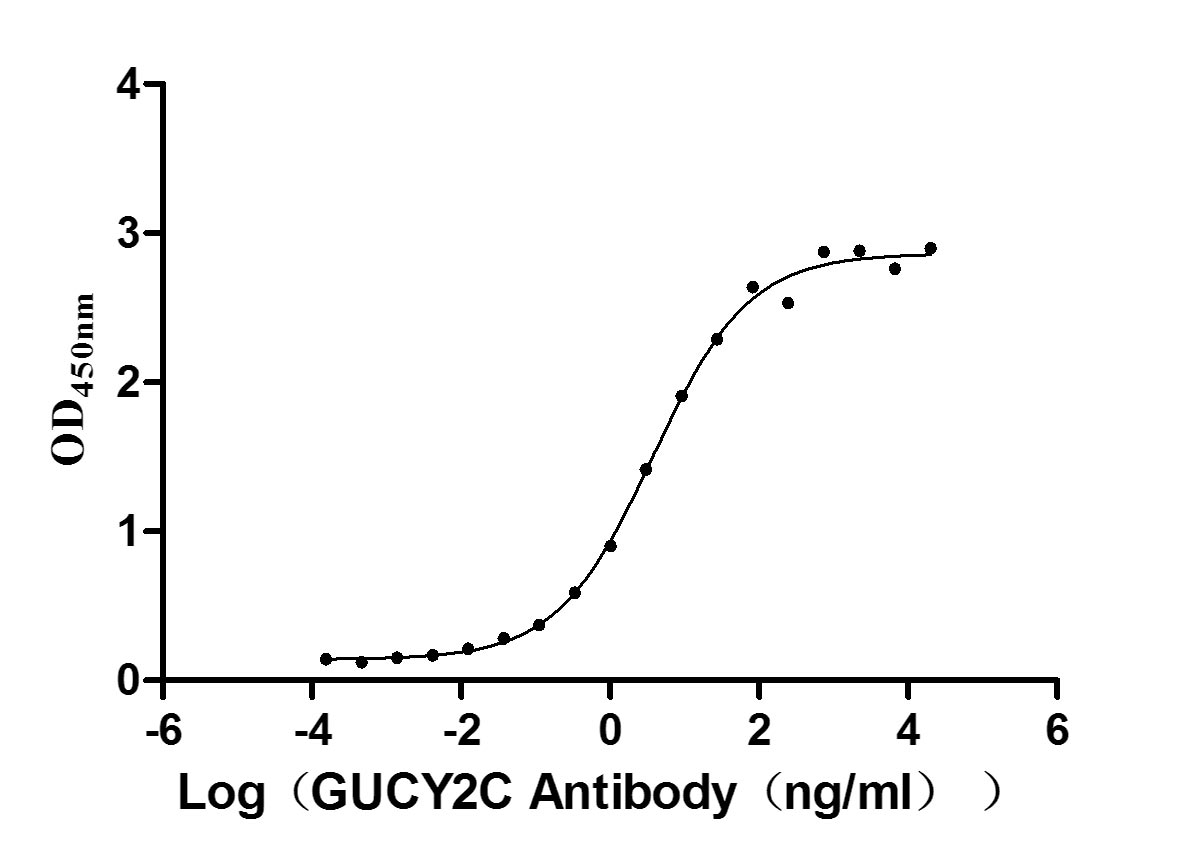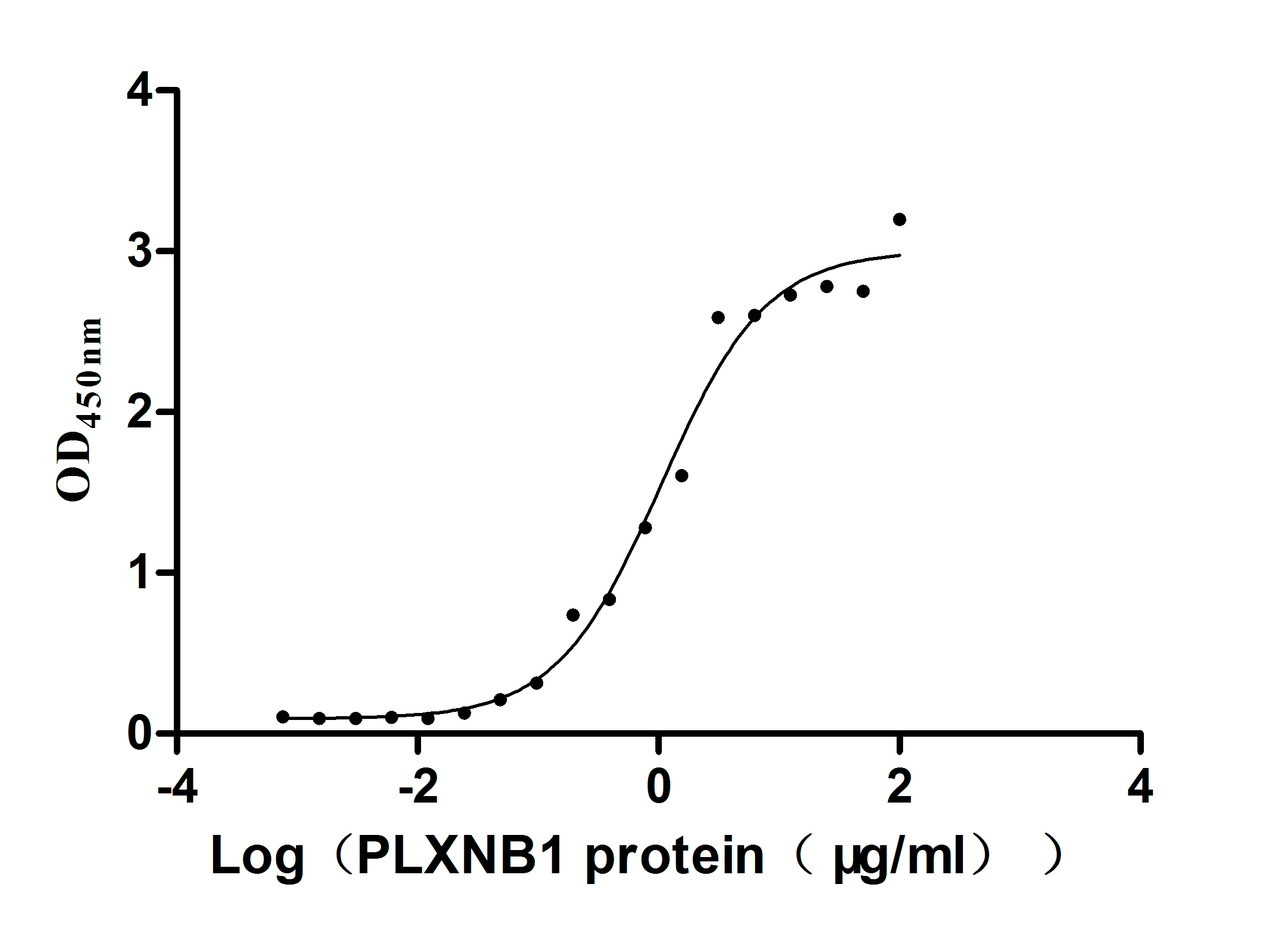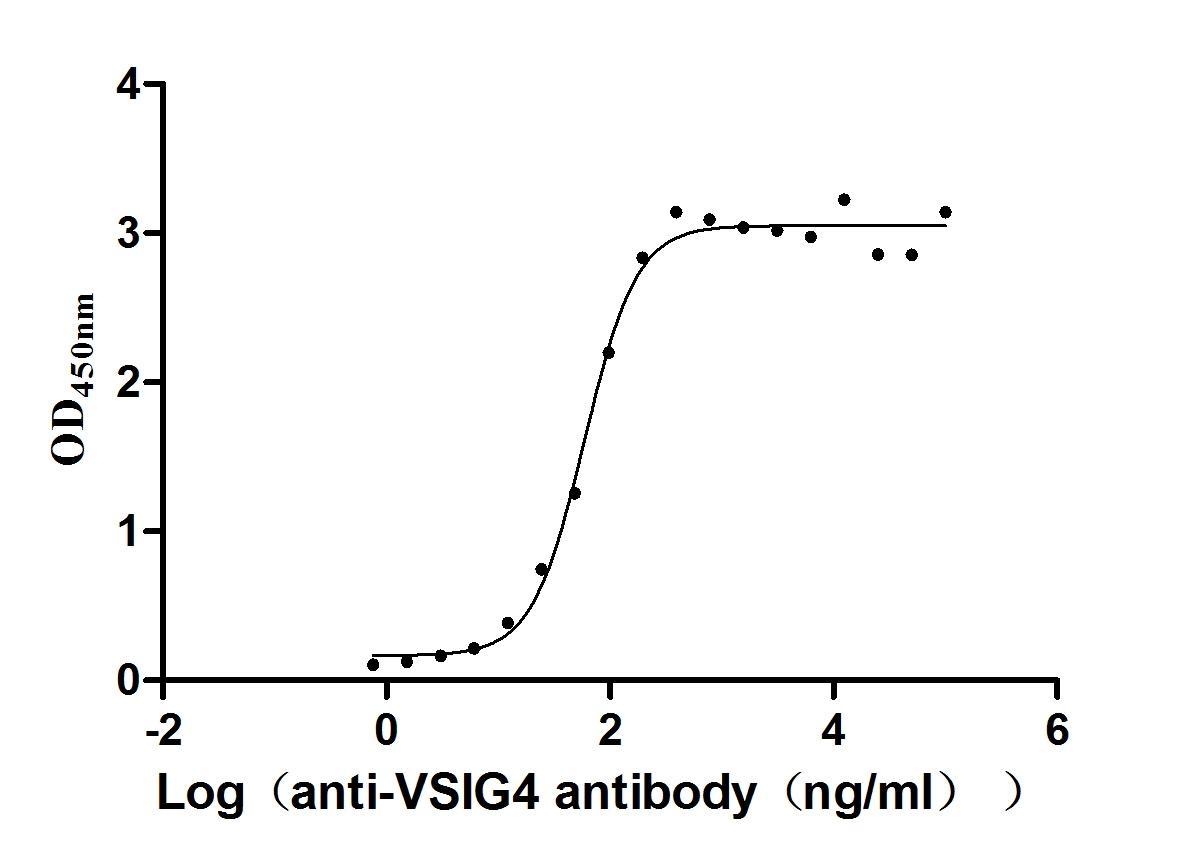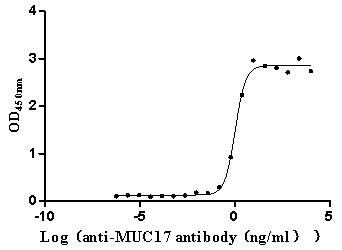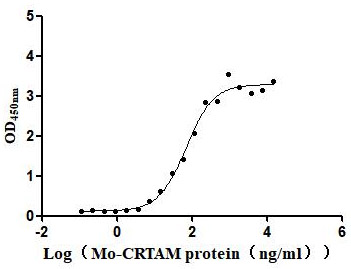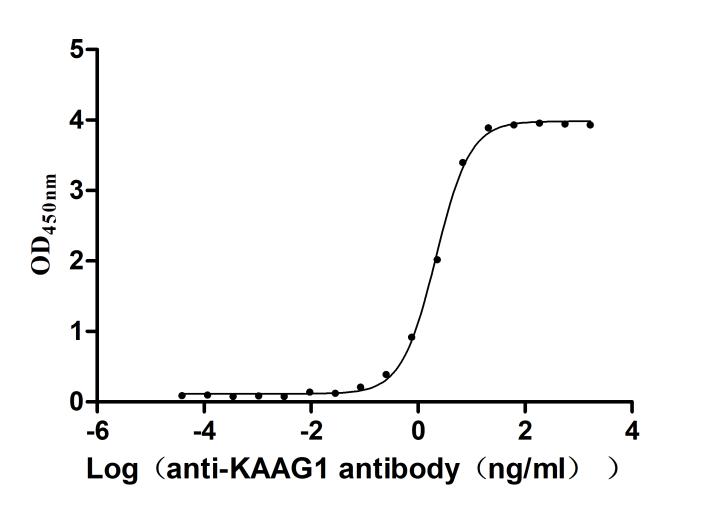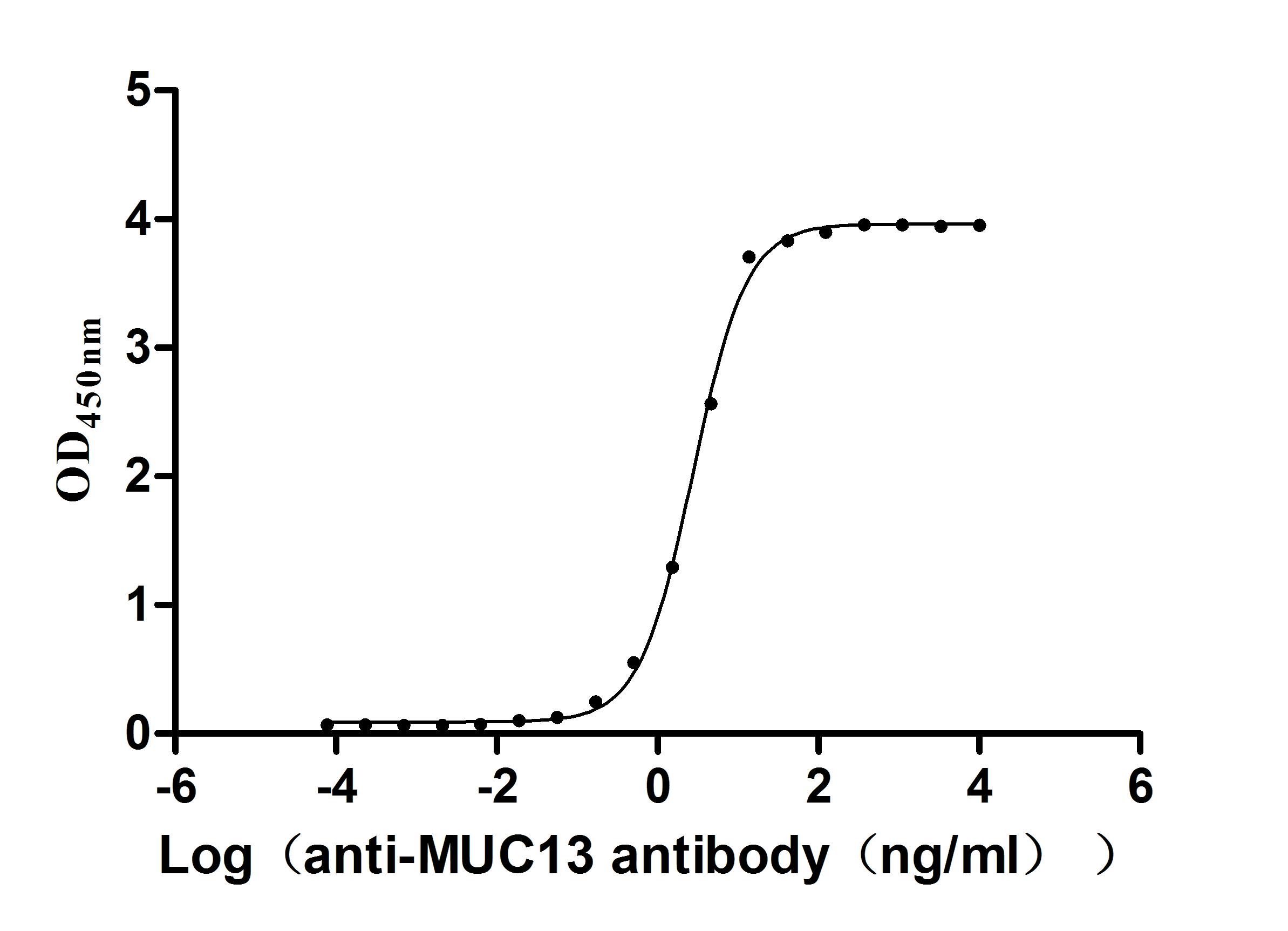Recombinant Mouse Alkaline phosphatase, tissue-nonspecific isozyme (Alpl)
-
中文名稱:Recombinant Mouse Alkaline phosphatase, tissue-nonspecific isozyme(Alpl)
-
貨號:CSB-YP001631MO
-
規(guī)格:
-
來源:Yeast
-
其他:
-
中文名稱:Recombinant Mouse Alkaline phosphatase, tissue-nonspecific isozyme(Alpl)
-
貨號:CSB-EP001631MO
-
規(guī)格:
-
來源:E.coli
-
其他:
-
中文名稱:Recombinant Mouse Alkaline phosphatase, tissue-nonspecific isozyme(Alpl)
-
貨號:CSB-EP001631MO-B
-
規(guī)格:
-
來源:E.coli
-
共軛:Avi-tag Biotinylated
E. coli biotin ligase (BirA) is highly specific in covalently attaching biotin to the 15 amino acid AviTag peptide. This recombinant protein was biotinylated in vivo by AviTag-BirA technology, which method is BriA catalyzes amide linkage between the biotin and the specific lysine of the AviTag.
-
其他:
-
中文名稱:Recombinant Mouse Alkaline phosphatase, tissue-nonspecific isozyme(Alpl)
-
貨號:CSB-BP001631MO
-
規(guī)格:
-
來源:Baculovirus
-
其他:
-
中文名稱:Recombinant Mouse Alkaline phosphatase, tissue-nonspecific isozyme(Alpl)
-
貨號:CSB-MP001631MO
-
規(guī)格:
-
來源:Mammalian cell
-
其他:
產(chǎn)品詳情
-
純度:>85% (SDS-PAGE)
-
基因名:
-
Uniprot No.:
-
別名:Alpl; Akp-2; Akp2; Alkaline phosphatase; tissue-nonspecific isozyme; AP-TNAP; TNSALP; EC 3.1.3.1; Alkaline phosphatase 2; Alkaline phosphatase liver/bone/kidney isozyme
-
種屬:Mus musculus (Mouse)
-
蛋白長度:Full Length of Mature Protein
-
表達區(qū)域:18-503
-
氨基酸序列FVP EKERDPSYWR QQAQETLKNA LKLQKLNTNV AKNVIMFLGD GMGVSTVTAA RILKGQLHHN TGEETRLEMD KFPFVALSKT YNTNAQVPDS AGTATAYLCG VKANEGTVGV SAATERTRCN TTQGNEVTSI LRWAKDAGKS VGIVTTTRVN HATPSAAYAH SADRDWYSDN EMPPEALSQG CKDIAYQLMH NIKDIDVIMG GGRKYMYPKN RTDVEYELDE KARGTRLDGL DLISIWKSFK PRHKHSHYVW NRTELLALDP SRVDYLLGLF EPGDMQYELN RNNLTDPSLS EMVEVALRIL TKNLKGFFLL VEGGRIDHGH HEGKAKQALH EAVEMDQAIG KAGAMTSQKD TLTVVTADHS HVFTFGGYTP RGNSIFGLAP MVSDTDKKPF TAILYGNGPG YKVVDGEREN VSMVDYAHNN YQAQSAVPLR HETHGGEDVA VFAKGPMAHL LHGVHEQNYI PHVMAYASCI GANLDHCAWA GSG
-
蛋白標簽:Tag?type?will?be?determined?during?the?manufacturing?process.
The tag type will be determined during production process. If you have specified tag type, please tell us and we will develop the specified tag preferentially. -
產(chǎn)品提供形式:Lyophilized powder
Note: We will preferentially ship the format that we have in stock, however, if you have any special requirement for the format, please remark your requirement when placing the order, we will prepare according to your demand. -
復溶:We recommend that this vial be briefly centrifuged prior to opening to bring the contents to the bottom. Please reconstitute protein in deionized sterile water to a concentration of 0.1-1.0 mg/mL.We recommend to add 5-50% of glycerol (final concentration) and aliquot for long-term storage at -20℃/-80℃. Our default final concentration of glycerol is 50%. Customers could use it as reference.
-
儲存條件:Store at -20°C/-80°C upon receipt, aliquoting is necessary for mutiple use. Avoid repeated freeze-thaw cycles.
-
保質(zhì)期:The shelf life is related to many factors, storage state, buffer ingredients, storage temperature and the stability of the protein itself.
Generally, the shelf life of liquid form is 6 months at -20°C/-80°C. The shelf life of lyophilized form is 12 months at -20°C/-80°C. -
貨期:Delivery time may differ from different purchasing way or location, please kindly consult your local distributors for specific delivery time.Note: All of our proteins are default shipped with normal blue ice packs, if you request to ship with dry ice, please communicate with us in advance and extra fees will be charged.
-
注意事項:Repeated freezing and thawing is not recommended. Store working aliquots at 4°C for up to one week.
-
Datasheet :Please contact us to get it.
相關(guān)產(chǎn)品
靶點詳情
-
功能:Alkaline phosphatase that metabolizes various phosphate compounds and plays a key role in skeletal mineralization and adaptive thermogenesis. Has broad substrate specificity and can hydrolyze a considerable variety of compounds: however, only a few substrates, such as diphosphate (inorganic pyrophosphate; PPi), pyridoxal 5'-phosphate (PLP) and N-phosphocreatine are natural substrates. Plays an essential role in skeletal and dental mineralization via its ability to hydrolyze extracellular diphosphate, a potent mineralization inhibitor, to phosphate: it thereby promotes hydroxyapatite crystal formation and increases inorganic phosphate concentration. Acts in a non-redundant manner with PHOSPHO1 in skeletal mineralization: while PHOSPHO1 mediates the initiation of hydroxyapatite crystallization in the matrix vesicles (MVs), ALPL/TNAP catalyzes the spread of hydroxyapatite crystallization in the extracellular matrix. Also promotes dephosphorylation of osteopontin (SSP1), an inhibitor of hydroxyapatite crystallization in its phosphorylated state; it is however unclear whether ALPL/TNAP mediates SSP1 dephosphorylation via a direct or indirect manner. Catalyzes dephosphorylation of PLP to pyridoxal (PL), the transportable form of vitamin B6, in order to provide a sufficient amount of PLP in the brain, an essential cofactor for enzymes catalyzing the synthesis of diverse neurotransmitters. Additionally, also able to mediate ATP degradation in a stepwise manner to adenosine, thereby regulating the availability of ligands for purinergic receptors. Also capable of dephosphorylating microbial products, such as lipopolysaccharides (LPS) as well as other phosphorylated small-molecules, such as poly-inosine:cytosine (poly I:C). Acts as a key regulator of adaptive thermogenesis as part of the futile creatine cycle: localizes to the mitochondria of thermogenic fat cells and acts by mediating hydrolysis of N-phosphocreatine to initiate a futile cycle of creatine dephosphorylation and phosphorylation. During the futile creatine cycle, creatine and N-phosphocreatine are in a futile cycle, which dissipates the high energy charge of N-phosphocreatine as heat without performing any mechanical or chemical work.
-
基因功能參考文獻:
- intestinal alkaline phosphatase knockout mice display higher intestinal Ca uptake, which over time appears to correlate with a positive effect on the biomechanical properties of trabecular bone. PMID: 29234952
- Study results from cerulein induced pancreatitis model in TNAP+/- mice show that altered TNAP expression results in heightened pancreatic inflammation, which may be explained by an augmented response of neutrophils and by a higher sensitivity of acinar cells to cerulein injury. PMID: 30251694
- TNAP activation in vascular smooth muscle cells (VSMCs) appears sufficient to induce calcification. TNAP activation in VSMCs stimulates expression of chondrocyte markers. PMID: 27932058
- Our results offer clear evidence that TNAP modulates T lymphocyte function and specifically T cell-dependent colitis. PMID: 28039309
- The results are the first to demonstrate a role for ENC1 in the control of osteoblast differentiation. Additionally, the contrasting mineralization phenotypes and transcriptional patterns seen with coordinate knockdown of both ENC1 isoforms vs selective knockdown of 67 kDa ENC1 suggest opposing roles for the isoforms in regulation of osteoblastic differentiation, through effects on Alpl expression and phosphate cellular PMID: 27996212
- TNAP overexpression in vascular endothelium in mice leads to an unusual course of coronary atherosclerosis and was accompanied by the reduction in body weight and left ventricular ejection fraction. PMID: 29023576
- Data, including data from studies using cells from transgenic/knockout mice, suggest that Med1 plays role in enamel formation; Med1 induces Alpl via stimulation of Notch1 signaling by forming Notch1-RBP-Jk complex on Alpl promoter. (Med1 = mediator complex subunit 1; Alpl = alkaline phosphatase, liver-bone-kidney; Notch1 = Notch gene homolog 1; RBP-Jk = kappa J region recombining binding protein suppressor of hairless) PMID: 28673966
- These analyses revealed that TNAP deficient mice present an increased proliferation of neural precursors, an altered neuronal morphology, and an augmented neuronal activity. We found that these alterations were associated with a partial downregulation of the purinergic P2X7 receptor (P2X7R). PMID: 27466191
- Despite similar deficiencies in alkaline phosphatase, Alpl(-/-) mice develop craniosynostosis and a brachycephalic/acrocephalic craniofacial shape of variable penetrance. PMID: 26605996
- Prevention of lethal murine hypophosphatasia by neonatal ex vivo gene therapy using lentivirally transduced bone marrow cells expressing Akp-2. PMID: 26467745
- TNAP in the vasculature contributes to the pathology of medial vascular calcification and that it is a druggable target. PMID: 25428889
- In cardiac fibroblasts, TNAP expression and activity is induced by sFRP2. PMID: 25972450
- p107 is required for the efficient recruitment of an activating SWI/SNF chromatin-remodeling complex, an essential event in Alpl induction. PMID: 25182511
- Inhibition of rhBMP-2-induced ALP activity by intracellular delivery of SMURF1 in murine calvarial preosteoblast cells. PMID: 24288199
- Findings demonstrate that Alpl(-/-) mice exhibit a craniofacial skeletal phenotype similar to that seen in infants with HPP, including true bony craniosynostosis in the context of severely diminished bone mineralization PMID: 25014884
- CD73 and TNAP play interactive roles to metabolize luminally applied 5'-AMP in the renal vasculature such that inhibition of both is required to inhibit the production of adenosine. PMID: 24990899
- TNAP plays a role in governing the phosphorylation status of phospholamban in the sarcoplasmic reticulum. PMID: 25015959
- Taken together, these data indicate that ATF3 is a novel negative regulator of osteoblast differentiation by specifically suppressing ALP gene expression in preosteoblasts. PMID: 24315873
- data suggest that the promineralization role of TNAP may be related not only to its accepted pyrophosphatase activity but also to its ability to modify the phosphorylation status of OPN. PMID: 23427088
- mineralization abnormalities of dentin; reduced overall mineralization with decreased matrix vesicle mineralization in the Phospho1(-/-) mice; almost complete absence of matrix vesicles in mice; further reduction in mineralization. PMID: 23694930
- In the cerebral cortex, myelinated axons, while present in wild-type, were absent in the Akp2( -/- ) mice and these animals also displayed a significantly increased proportion of immature cortical synapses. PMID: 22696173
- a link between ATRA-induced mL/B/K-ALP gene transcription and chromatin remodeling PMID: 22270475
- Results demonstrate that TNAP, regulating both ligand availability and protein expression of P2X7 receptor, is essential for axonal development. PMID: 21289095
- Data show that alkaline phosphatase (AP) activity in brain vessels and parenchyma in which AP exhibits specific patterns is attributable to TNAP. PMID: 21191615
- We show that TNAP knockdown reduces cell proliferation and differentiation into neurons or oligodendrocytes PMID: 20849921
- These results demonstrate that calcium ions released from apatite are important in the synergistic effect of 20alpha-HC and apatite. PMID: 20683129
- Once the HT2B receptor is expressed, it constitutively controls tissue-nonspecific alkaline phosphatase activity at a post-translational level along the overall period of bone mineral deposition PMID: 20573958
- Tissue-nonspecific alkaline phosphatase is the enzyme that hydrolyzes both ATP and inorganic pyrophosate in matrix vesicles. PMID: 19874193
- correction of bone mineralization abnormalities in knockout mice null for both the TNAP (Akp2) and PC-1 (Enpp1) genes PMID: 12082181
- The Alpl (Akp2) gene is located within the quantitative trait locus region for alkaline phosphatase activity on chromosome 4. PMID: 16159911
- alkaline phosphatase 2(Hpp/Hpp) mice develop late-onset skeletal disease, notably defective endochondral ossification and bone mineralization that leads to arthropathies of knees and shoulders PMID: 17539739
- The process selectively internalizes IAP and may contribute to the appearance of the enzyme in serum and surfactant-like particles. PMID: 17947448
- Results show that inorganic phosphate (P(i)) levels and TNSALP activity increased in response to androgen/androgen receptor (AR), and P(i) signals increase the expression and translocation of AR. PMID: 18838539
- TNAP-AID mice expressed alpha-fetoprotein and had deleterious mutations in the tumour suppressor gene Trp53, some of which corresponded to those found in human cancer. PMID: 18997814
顯示更多
收起更多
-
亞細胞定位:Cell membrane; Lipid-anchor, GPI-anchor. Extracellular vesicle membrane; Lipid-anchor, GPI-anchor. Mitochondrion membrane; Lipid-anchor, GPI-anchor. Mitochondrion intermembrane space.
-
蛋白家族:Alkaline phosphatase family
-
組織特異性:Widely expressed. Expressed in DRG neurons and spinal cord neurons.
-
數(shù)據(jù)庫鏈接:
Most popular with customers
-
Recombinant Human Heat-stable enterotoxin receptor (GUCY2C), partial (Active)
Express system: Mammalian cell
Species: Homo sapiens (Human)
-
Recombinant Human Plexin-B1 (PLXNB1), partial (Active)
Express system: Mammalian cell
Species: Homo sapiens (Human)
-
Recombinant Human V-set and immunoglobulin domain-containing protein 4 (VSIG4), partial (Active)
Express system: Mammalian cell
Species: Homo sapiens (Human)
-
Recombinant Human Mucin-17 (MUC17), partial (Active)
Express system: Mammalian cell
Species: Homo sapiens (Human)
-
Recombinant Mouse Cell adhesion molecule 1 (Cadm1), partial (Active)
Express system: Mammalian cell
Species: Mus musculus (Mouse)
-
Recombinant Human Kidney-associated antigen 1 (KAAG1) (Active)
Express system: E.coli
Species: Homo sapiens (Human)
-
Recombinant Human Mucin-13(MUC13),partial (Active)
Express system: yeast
Species: Homo sapiens (Human)
-
Recombinant Human C-C chemokine receptor type 5 (CCR5)-VLPs (Active)
Express system: Mammalian cell
Species: Homo sapiens (Human)


